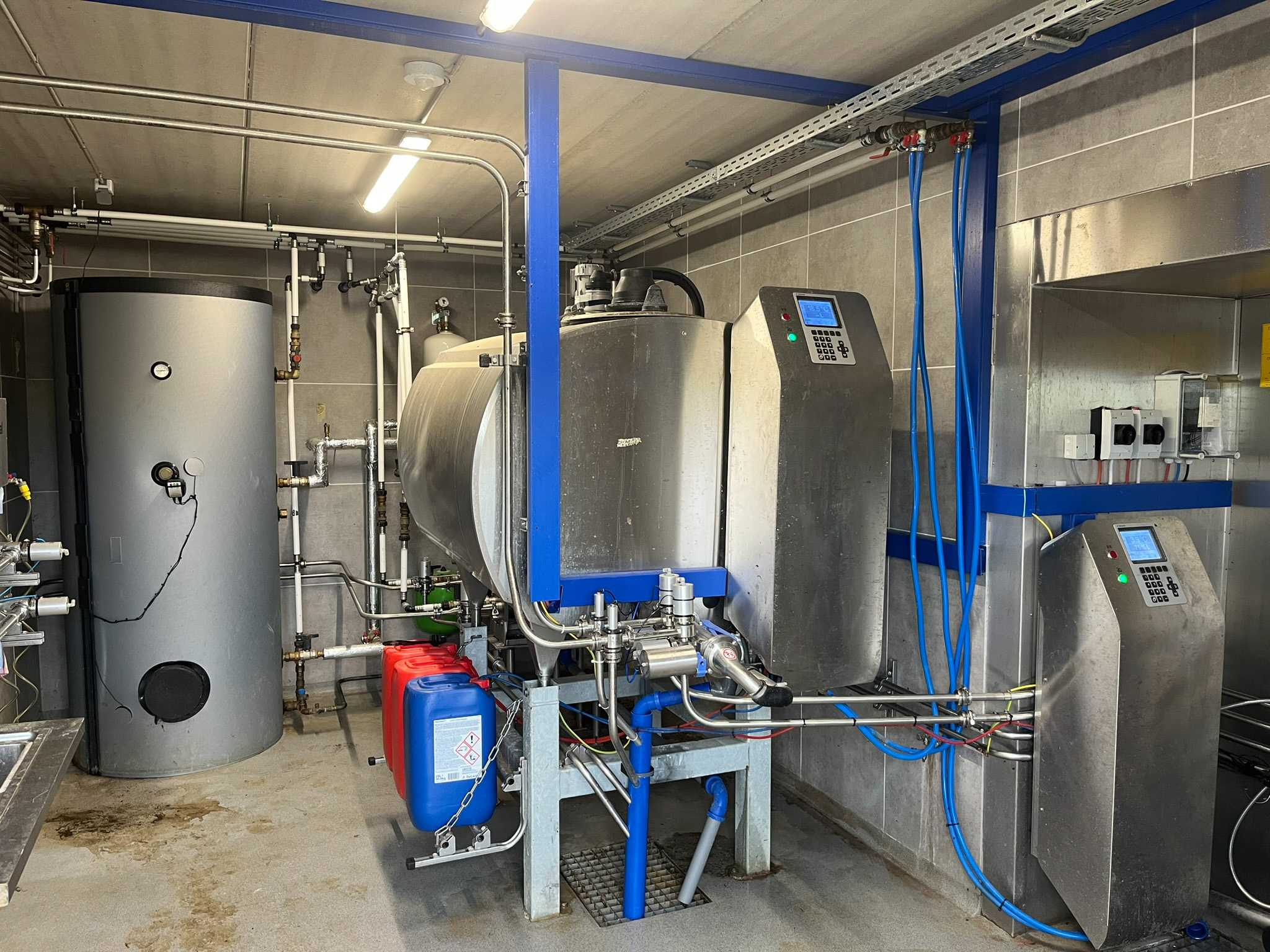Agriculture offers many opportunities to improve energy efficiency. One area with particularly high potential is the recovery of residual heat generated by cooling processes or other agricultural activities. Thanks to modern technologies, this otherwise wasted energy can be reused, helping to reduce overall energy consumption.
Solutions for recovering and using residual heat on dairy farms: saving, reusing, heating
Cooling milk with a precooler: saving energy and improving milk quality
Effective milk cooling starts with the use of a precooler. By using a tube or plate heat exchanger, milk at ambient temperature (around 38°C) can already be pre-cooled to 15 - 20°C with cold water before being stored in the milk tank. The leaves the refrigeration unit then only has to perform the final cooling to 4°C, allowing energy savings of 40 - 60%.
In addition to reducing energy consumption, rapid cooling also enhances milk quality, as it is more effective than slow cooling in the storage tank. Another advantage: the water warmed during the precooling process can be used for watering animals. Especially in winter, lukewarm water encourages increased water intake, which can positively impact animal welfare and milk production.
Heat recovery from refrigeration units: efficient hot water production
Heating water with electric resistors or conventional water heaters is often inefficient and expensive. A more sustainable alternative is to recover the waste heat from the refrigeration compressor, which would otherwise be released unused into the environment.
This process can heat around 60 - 70 litres of water to 50 °C from the cooling of 100 litres of milk. The heated water is stored in an insulated tank and can be used for a variety of purposes, including cleaning milking equipment and tanks, handwashing, or for preparing milk for calves.
By using waste heat recovery systems, farms can reduce electricity consumption for cleaning processes by up to 40%, resulting in substantial energy and cost savings.
Making use of excess heat: from farm to home
Dairy farming generates heat that can be utilised for additional purposes. One efficient option is to use excess heat to supply heating and domestic hot water for a single-family home. In a modern, well-insulated house, this additional energy source can contribute meaningfully to heating the building and producing hot water.
This concept highlights a sustainable connection between agriculture and housing, offering less energy waste, lower operating costs, and more efficient use of renewable resources.

